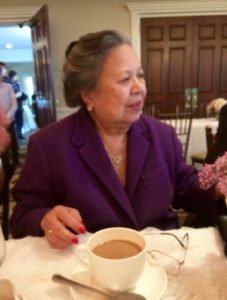Black girl magic is prevalent throughout sassafrass, cypress, & indigo in many different forms, perhaps the most straightforward are Indigo’s literal spells she writes for self-preservation and dream catching. She particularly draws on the power of her ancestor’s who were women.
When Indigo first started her menses, her mother sent her to the Pharmacy. In her mission to buy Kotex from the Pharmacy, Indigo experienced sexual violence by Mr. Lucas and had to quickly run home to engineer a spell that would rid herself of the evil.
TO RID ONESELF OF THE SCENT OF EVIL*
by Indigo
….
Take a piece of silk or cotton to which you feel attached & that bodes of happier times. Fill it with caraway seeds. Tie it with a ribbon that is your oldest female relative’s favorite color (30).
The ritual begins with repeating the offender’s name to bring the violent moment present, waving your arms and hands around you to clean the atmosphere, drawing a bath to cleanse yourself of the evilness, and ends with floating an object that is made from something that reminds you of happier times and of your oldest female relative. In the process of washing the evilness off, Indigo is also trying to draw in goodness for healing – for her, that is through channeling the happier times sentimental objects hold and perhaps some form of power or magic her oldest female relative has.
In addition to drawing on her oldest female relative, she also brings into the present (or connects the past with the present) her ancestors who were slaves. Twice she mentions, “the slaves who were ourselves”.
The first time she says this is when Indigo first joined the Junior Geechee Captains with Spats and Crunch. She rejected the idea of adopting a new name because she liked her name. She strongly identified with her name and liked that,
“The slaves who were ourselves knew all about indigo & Indigo herself” (40).
This is a beautiful sentence that seamlessly brings together the past and the present. In the first part of the sentence, “the slaves who were ourselves”, she plays with grammatical tenses in order to convey how slavery is both historical and present within her. She continues to draw on the presentness and history within her in the second part of the sentence, “knew all about indigo & Indigo herself”. She is making connections with the origins of her name, the indigo dye, a major plantation crop in South Carolina in the 18th century, and her present self, “Indigo”.
Indigo uses the phrase “the slaves who were ourselves” again just as she was about to submit herself to Mabel and Prettyman for disrespecting Mabel. She thinks to herself,
“The Caverns began to moan, not with sorrow but in recognition of Indigo’s revelation. The slaves who were ourselves had known terror intimately, confused sunrise with pain, & accepted indifference as kindness” (49).
In this moment, Indigo decides not to run away from Mabel and Prettyman and instead listen to her ancestors. She did not want to hurt Prettyman and Mabel; there were no malicious feelings between them, there was just a difference in interest between Indigo and Mabel and Prettyman. She realized this confusion through thinking about her ancestor’s confusions and thereby again, bridging the past and the present, paying homage to her ancestors who have done this before.
The first time Indigo thinks about younger generations rather than older generations is when she decides to put her dolls away in order to protect their youth. She decides that she would save the dolls for her daughters and her mother,
Hilda Effania couldn’t agree more with Indigo’s familial fervor. After all, she was devoted to her daughters. Now, Indigo, all of 12, was saving her more treasured possessions for the daughters to come (53).
In this scene, Hilda Effania is particularly proud that her daughter is already thinking about her own daughter in the future. This scene affirms the priorities and powers in passing things down intergenerationally. Shange includes a moment where the present is working towards passing down rather than just receiving from generations before.
As I was reading sassafrass, cypress, and indigo this past week, I was also catching up with the show, “Jane the Virgin”. Reading and watching this book and show side-by-side overwhelmed my heart with content on intergenerational love, mother-daughter relationships, support and love between women of color, etc. The show follows a grandmother, a mother, and a daughter working together to achieve their individual goals and overcome their individual problems. Jane (the daughter), just had a baby, and she problem solves heavily with her mother and grandmother on taking care of the child. In the scene below, Jane is delivering a Christening speech for her baby that was written by her grandmother and read during both her’s and her mother’s christenings.

“We Need To Talk About This Christening Speech From “Jane The Virgin””, Buzzfeed

“17 Times Jane the Virgin Filled Your Heart to the Brim”, Buzzfeed





